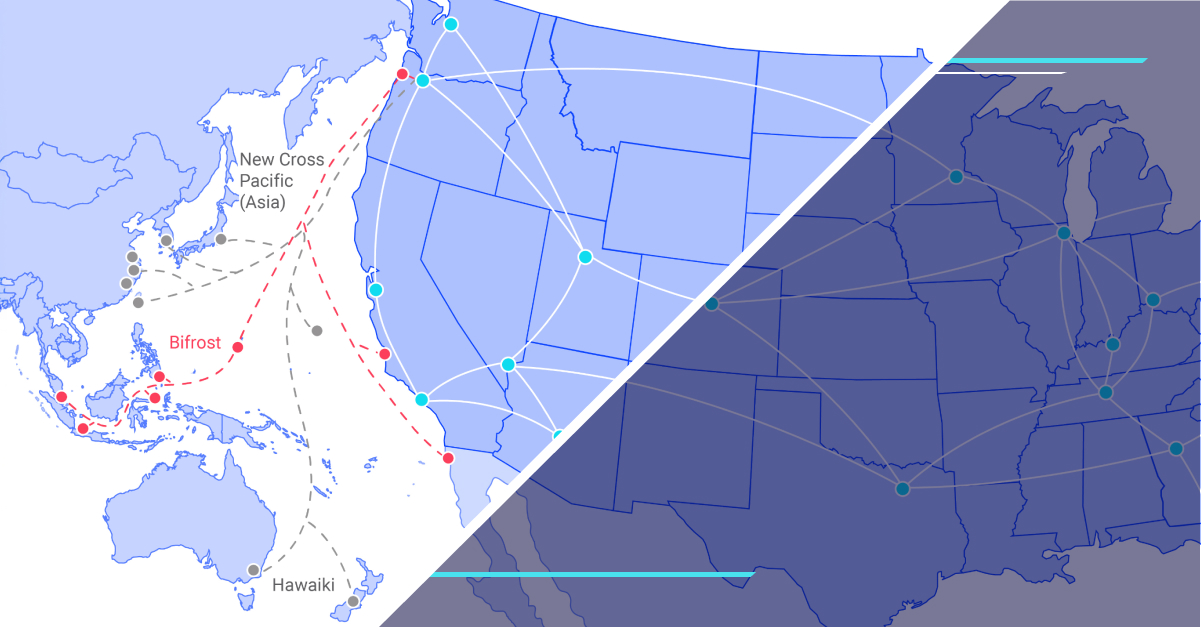Cloud strategy explained
Your comprehensive guide to developing a winning cloud strategy
Is your organization struggling to get tangible results from its cloud investments? A strong cloud strategy isn't just about where workloads reside; it's the essential roadmap connecting technology decisions to critical business outcomes like agility, cost control, security, and sustainable growth.

Whether you're embarking on your first cloud migration, optimizing a complex multi-cloud environment, or simply seeking better ROI, having a clear strategy is paramount. It aligns your IT initiatives with overarching business goals, helps you navigate common pitfalls, and ensures you extract maximum value from cloud services.
This comprehensive guide walks you through exactly what a cloud strategy entails, why it matters, and provides a step-by-step framework to build one tailored to your needs. Expect practical insights, not jargon, to empower confident cloud decision-making.
What is a cloud strategy?
A cloud strategy is your organization’s documented plan for how to use cloud computing services (public, private, or hybrid) to achieve specific business goals. It goes beyond technical blueprints, outlining the why, what, and how of your cloud adoption journey. Critically, it ensures technology decisions directly support desired business outcomes like enhanced scalability, operational resilience, and cost efficiency.
Importance of a cloud strategy
Why invest time in developing a formal cloud strategy? Without one, cloud initiatives often drift into costly experiments, leading to potential vendor lock-in, security vulnerabilities, shadow IT, and wasted resources. A well-defined strategy provides:
- Alignment: Creates a shared vision, ensuring IT capabilities directly support business needs and priorities.
- Governance: Acts as a cloud governance framework, standardizing approaches to security, compliance, cost management, and deployment.
- Efficiency: Prevents costly overlaps, underutilized resources, and unexpected bills by establishing clear guidelines.
- Risk mitigation: Proactively addresses security, compliance, and integration challenges before they become major roadblocks.
- Future-proofing: Provides a deliberate approach to adopting new cloud technologies and adapting to market shifts.
Essentially, a good cloud strategy ensures every cloud investment delivers measurable value and contributes to the organization's overall objectives.
Key components of an effective cloud strategy
While every organization's needs differ, a strong cloud strategy framework typically integrates several critical components, which are often addressed through the development steps outlined below:
- Business objective alignment: Clearly defined goals the cloud should help achieve.
- Infrastructure and application assessment: Understanding the current state.
- Cloud readiness and workload placement: Deciding what goes where (public, private, hybrid).
- Security and compliance policies: Defining non-negotiable requirements.
- Cloud governance model: Outlining roles, responsibilities, and cost management.
- Migration plan and roadmap: Phasing the transition (if applicable).
- Operating model: How cloud resources will be managed long-term.
- Provider selection criteria: How vendors will be evaluated.
How to develop your cloud strategy: A step-by-step roadmap
Developing a clear cloud strategy starts with understanding what your business actually needs from the cloud. The steps below help ensure your approach is thoughtful, structured, and aligned with both technical and operational goals.
1. Identifying business objectives
Connect every cloud decision back to core business goals. Are you targeting faster time-to-market for new products? Reducing operational costs? Improving disaster recovery capabilities? Enabling a global remote workforce? Make these objectives SMART (Specific, Measurable, Achievable, Relevant, Time-bound) and establish KPIs to track success and ROI.
2. Assessing current IT infrastructure
Conduct a thorough inventory and analysis of your existing infrastructure – servers, storage, networks, applications, databases, security tools, integrations, and dependencies. This IT assessment is vital for identifying migration candidates, potential roadblocks (like technical debt or legacy systems), skill gaps, integration requirements, and shape whether you’ll lean into public, private, or hybrid cloud solutions.
3. Evaluating cloud readiness
Not all applications are created equal or are immediately suitable for the cloud. Analyze key workloads based on factors like business criticality, technical architecture, performance needs, data sensitivity, regulatory constraints, and dependencies. This cloud readiness assessment helps determine the best migration path (e.g., rehost, replatform, refactor, retire, retain) and prioritize the transition, ensuring you tackle the right workloads at the right time. Consider leveraging cloud migration services for expert guidance on complex assessments and planning.
Types of cloud strategies: Choosing your approach
There's no single "best" cloud strategy. The optimal approach depends entirely on your specific business objectives, risk tolerance, regulatory environment, technical requirements, and existing infrastructure. Here are the common models:
Public cloud strategy
A public cloud strategy centers on using third-party platforms like AWS, Azure, or Google Cloud to host applications and data. It offers scalability, speed, and reduced upfront costs, but often involves trade-offs in terms of control and customization.
This model works well for businesses that want to move quickly, scale workloads on demand, or avoid managing physical infrastructure.
Private cloud strategy
A private cloud strategy keeps cloud infrastructure dedicated to one organization. It’s either hosted on-premises or with a provider offering isolated environments. This gives you greater control over security, compliance, and performance—making it a strong fit for industries with strict regulatory requirements.
Private cloud may require more upfront investment but can deliver long-term value for teams that need highly customized or stable environments.
Hybrid cloud strategy
A hybrid approach blends on-prem systems with cloud services, allowing data and applications to move between environments as needed. This strategy offers flexibility and is often used by organizations that are transitioning over time or have legacy systems that can’t easily move to the cloud.
If this sounds like your environment, here are 6 essentials for a seamless hybrid and multi cloud strategy.
Multi-cloud strategy
A multi-cloud strategy involves using services from more than one cloud provider—often to avoid lock-in, improve resilience, or optimize workloads across different platforms.
The challenge is managing the complexity. If you’re exploring this route, check out how to optimize your multi cloud strategy for business agility.
Cloud computing strategy
This term often refers to the overall plan for how your organization uses cloud technologies, not just where they’re hosted. It includes governance, architecture, service models (like IaaS, PaaS, SaaS), and how your teams access and secure cloud-based resources.
It’s a foundational piece that shapes all the other decisions around infrastructure, tools, and providers.
Cloud first strategy
A cloud first strategy means defaulting to cloud-based solutions unless there’s a strong reason not to. It’s often used by organizations looking to modernize or standardize operations, particularly after consolidations, office closures, or large-scale digital initiatives.
Cloud first doesn’t mean “cloud only”—but it does shift the mindset to prioritize flexibility, speed, and scalability when evaluating new tools or services.
Benefits of a well-defined cloud strategy
A well-executed cloud strategy does more than just move workloads off-prem. It gives your organization a more flexible, resilient, and scalable foundation to grow on. Here are some of the most impactful benefits:
Cost efficiency
Transition capital expenses (CapEx) to operational expenses (OpEx), leverage pay-as-you-go models, eliminate infrastructure overhead, and prevent budget surprises through effective cloud cost management and FinOps practices.
Scalability and flexibility
Rapidly scale resources up or down to meet demand, accelerate the development and deployment of new services (improved time-to-market), and adapt more quickly to changing market conditions.
Enhanced security and compliance
Leverage sophisticated security tools and expertise from major cloud providers, implement consistent security controls across environments, and potentially simplify adherence to complex regulatory requirements (with proper configuration and governance).
Improved collaboration and productivity
Centralized data and cloud-based tools facilitate seamless remote work, improve cross-functional team collaboration, and boost overall efficiency.
Greater reliability and disaster recovery
Benefit from high availability built into cloud platforms and provider Service Level Agreements (SLAs). Design robust disaster recovery and business continuity solutions more easily and cost-effectively than traditional methods.
Cloud strategy challenges and how to avoid common mistakes
Even well-intentioned strategies can face hurdles. Awareness and proactive planning are key:
Challenge: Ensuring data security and compliance
Moving sensitive data requires rigorous planning around access control, encryption, data residency, and meeting industry regulations.
Avoid it: Integrate security from Day 1. Define clear security policies, roles (IAM), encryption standards (at-rest, in-transit), and compliance controls specific to each cloud environment. Regularly audit configurations. For extra guidance, this breakdown of cloud infrastructure strategy is a good place to start.
Challenge: Integration with legacy systems
Older, monolithic applications may not be cloud-native or easily integrated with modern cloud services.
Avoid it: Include an assessment of legacy systems early in your planning. Look for opportunities to phase out, replatform, or replace apps that will limit your long-term flexibility. Our cloud migration strategies post outlines how to approach this.
Challenge: Managing cloud costs
The ease of provisioning resources can lead to uncontrolled spending, underutilized instances, and budget overruns without proper oversight.
Avoid it: Implement cloud cost management best practices. Establish budgets, use tagging for cost allocation, set up alerts, regularly review usage, and optimize resource sizing. Automate monitoring where possible.
Challenge: Implementing effective change management
Shifting to the cloud impacts workflows, tools, and potentially job roles. Resistance to change or inadequate training can limit success.
Avoid it: Communicate the strategy and its benefits clearly and early. Involve stakeholders from across the business. Provide thorough training and ongoing support to help users adapt to new ways of working.
Best practices for a successful cloud strategy
Developing the strategy is just the start. Long-term success relies on ongoing effort and adherence to best practices:
Aligning with business goals
Continuously verify that cloud initiatives directly support and enable key business objectives. This ensures relevance and secures ongoing executive buy-in.
Involving stakeholders early
IT shouldn’t work in a vacuum. Bring in input from operations, finance, compliance, and line-of-business teams early in the planning process. This ensures buy-in and helps uncover needs that might otherwise be missed.
Establish robust cloud governance
Define clear policies, standards, and processes for security, compliance, cost management, resource provisioning, and architecture. Automation can help enforce governance.
Choosing the right cloud providers
Evaluate providers based on technical fit, reliability, security posture, support, pricing models, and alignment with your strategy. Don't just choose a provider; choose the right services for each workload. If you’re comparing options now, our cloud choices ebook can help break down what to look for.
Continuous monitoring and optimization
Cloud is dynamic. Regularly monitor performance, security posture, and costs. Use insights to optimize resource utilization, refine architectures, and adapt the strategy as business needs evolve. Treat optimization as an ongoing process, not a one-off task.
Cloud infrastructure strategy success story
One example of a successful cloud strategy in action comes from Positrak, a company that needed a reliable, scalable solution to support its growth and simplify operations.
With help from Flexential, Positrak developed a customized cloud infrastructure strategy tailored to its needs. The result was improved performance, stronger security, and a smoother path for ongoing innovation—without sacrificing control or flexibility.
Their story is a valuable reminder: when cloud strategy and execution are aligned, the cloud becomes a real business enabler, not just another IT project.
Helpful next steps and resources
A smart cloud strategy helps you make confident, informed decisions that support your business as it grows and changes. Whether you're just getting started or refining your approach, the right guidance can make a big difference.
Explore more resources to support your planning:
If you're ready to take the next step, contact our team to learn more about our cloud services and how we can help shape a strategy that fits your goals.
Cloud strategy FAQs
What does a cloud strategist do?
A cloud strategist is responsible for defining how an organization can best leverage cloud technologies to meet specific business objectives. Their role involves assessing current infrastructure, analyzing business needs, recommending appropriate cloud models (public, private, hybrid, multi-cloud) and services, developing the cloud strategy roadmap, defining governance policies, and often guiding the cloud adoption process to ensure security, scalability, and cost-effectiveness.
What is the cloud right strategy?
The "cloud right" strategy emphasizes selecting the optimal cloud environment (public, private, hybrid, or multi-cloud) on a per-workload or per-application basis, aligning closely with specific technical requirements, security needs, compliance mandates, and business outcomes. It contrasts with a blanket "cloud-first" approach by prioritizing suitability over simply defaulting to the cloud, ensuring the best fit for each specific use case.
What is a cloud strategy framework?
A cloud strategy framework provides a structured methodology and outlines the essential components needed for comprehensive cloud planning. Common elements include defining business objectives, performing infrastructure and application assessments, determining workload priorities and placement, establishing security and compliance requirements, creating a cloud governance model, planning migration, and setting metrics for success. It acts as a template to guide the strategy development process.
What is a cloud-first strategy?
A cloud-first strategy establishes cloud-based solutions (SaaS, PaaS, IaaS) as the default, preferred option when evaluating new technologies or replacing existing systems. It doesn't mandate moving everything to the cloud ("cloud-only") but rather shifts the organizational mindset to prioritize the flexibility, scalability, and potential speed advantages of cloud services unless a compelling business or technical reason justifies an on-premises alternative.







